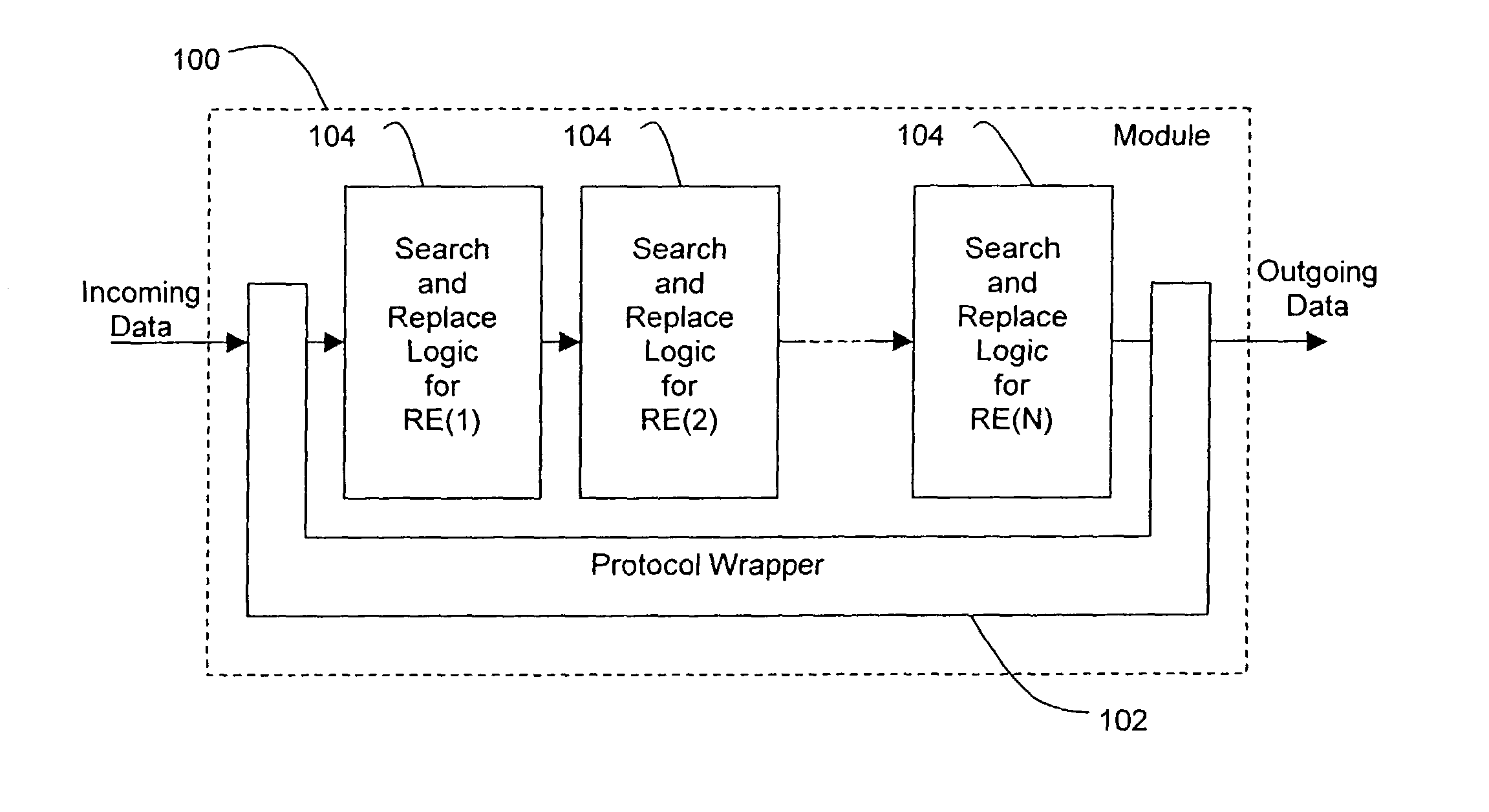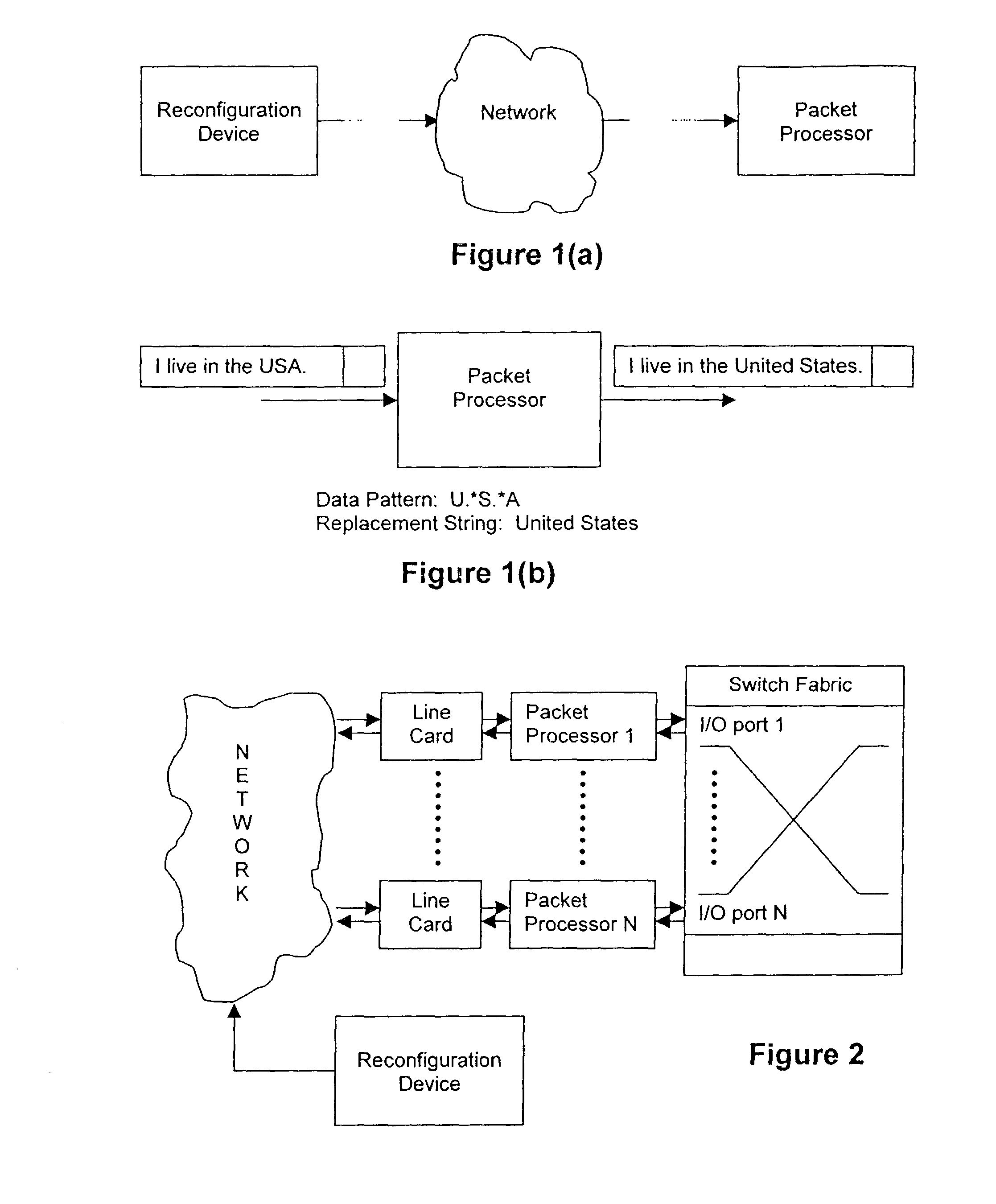Methods, systems, and devices using reprogrammable hardware for high-speed processing of streaming data to find a redefinable pattern and respond thereto
- Summary
- Abstract
- Description
- Claims
- Application Information
AI Technical Summary
Benefits of technology
Problems solved by technology
Method used
Image
Examples
Embodiment Construction
[0049]An overview of the packet processing system of the present invention is shown in FIGS. 1(a) and 1(b). The packet processor operates to receive data packets transmitted over a computer network, and scan those packets to determine whether they include a string that matches a specified data pattern. If the packet is found to include a matching string, the packet processor performs a specified action such as data modification (e.g. string replacement), a packet drop, a notification, or some other action. For example, the packet processor may be configured to determine whether a packet includes the string “recieved”, and if that string is found, modify the packet by replacing each instance of “recieved” with the properly-spelled replacement string “received”. Or, the packet processor may be configured to determine whether a packet includes a string indicative of a computer virus, and if such a string is found, drop the packet. Also, the packet processor may be configured to send a ...
PUM
 Login to View More
Login to View More Abstract
Description
Claims
Application Information
 Login to View More
Login to View More - R&D
- Intellectual Property
- Life Sciences
- Materials
- Tech Scout
- Unparalleled Data Quality
- Higher Quality Content
- 60% Fewer Hallucinations
Browse by: Latest US Patents, China's latest patents, Technical Efficacy Thesaurus, Application Domain, Technology Topic, Popular Technical Reports.
© 2025 PatSnap. All rights reserved.Legal|Privacy policy|Modern Slavery Act Transparency Statement|Sitemap|About US| Contact US: help@patsnap.com



